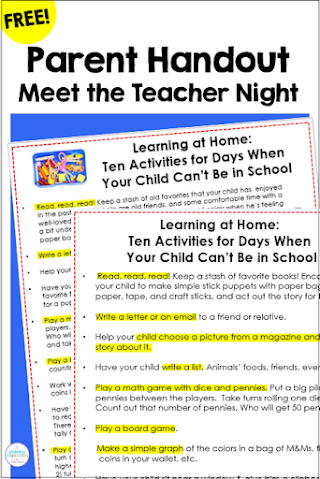With so much to prepare as a new school year begins, getting a variety of good options ready to use for your early finishers is one of those things that unfortunately tends to slip lower and lower on your to-do list.
After all, there's always "read a book" or "go on your Chromebook". But are those kinds of very broad choices the optimal use of learning time for fast finishers? It's not that they're not good choices, but every learner needs and deserves more!
What do the strongest options for K-3 learners look like?
* The best options reward students with the opportunity to choose. They have to think about what they'd like to do, think about what's a new choice or what they've already done and want to try again (or what they don't!). They gain confidence as they practice making choices. Choice requires thinking, choice is empowering.
Having a collection of games that will give your students choices is a great starting point!
Here's a set of addition within 20 games for first grade as an example.
The set includes ten easy prep solo challenge games that are designed to be played by just one player - no waiting for a partner to complete their work!
Want to save this post? Just click the Pin It button!
* Look for options that allow your students to take what they've learned in class and extend it, learning more, for example, about the social studies or science topic you're teaching.
* Seek out activities that your students can complete independently! Look for clearly written directions and activities in the same format as they've already completed as a class (color-by-code math pages, for example).
Let's look at a few options you might consider preparing today, before there's a little sweetie tapping on your hip saying, "What do I do now?" :)
1. Draw and Write: Prep a set of task cards or a chart list of people and/or places. Students who finish early can choose one or more cards and imagine a situation that places them together. Then they'll choose whether to illustrate and write a few sentences about the situation, or take a graphic novel / cartoon approach, writing the conversation between the characters.
Short on time and need some quick-and-easy prep task cards for this? Here's a set of 120 character and setting cards, available in both English and Spanish.
2. Reading self-selected books is never a bad option, but consider getting more learning power from this by offering a collection of books that echo what you're currently teaching, as mentioned above. Your school librarian (pleeeease tell me that you still have a school librarian!) or public library will likely be able to help with suggestions!
For example, are you teaching the butterfly life cycle? Offer your early finishers choices from the books you've used as read alouds, or extend the opportunities to learn with something more advanced like a field guide to butterflies - there's so much to be learned from visuals, and pictures may be just what some students need to spark curiosity and learn more!
3. I mentioned color by code as an activity that works on repeat. Another activity that will be used again and again is this math variation on word searches - sum searches through totals of 20. Print your word and number searches on cardstock and laminate - they'll get lots of repeat uses and you won't be running to the copy machine!
4. Playing games is a fun and motivating way for early finishers (and ALL students!) to practice what they've learned. But it can get tricky if a student finishes and has no one to play a game with!
Look for activity type "games" that can be completed by just one person, like matching and sorting.
5. Offer a selection of puzzles and brain teasers that are so engaging that your students will think that they're playing, not practicing!
One of my students' favorites was math riddle task cards, which are basically elimination riddles ... use math clues and critical thinking to eliminate all but one of the provided answer options.
I have TONS of math riddle sets in my store! If you click on these grade level bundles, you can scroll down on each to see the single topic sets that are included.
I hope these options will be helpful for you, and get you thinking of other choices that will be a good match for your fast finishers!
Above all, make your options so enticing that they'll motivate all of your students to stay on task so they too can be part of the exciting activities that you've gathered!
Happy learning!


























